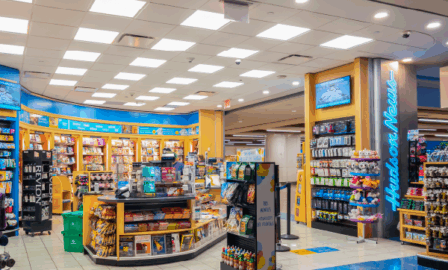Integrating Diversity and Inclusion in Retail Operations
Today’s brands will find value in being intentional about their efforts around diversity and inclusion in retail, both externally and internally facing. As the American consumer base grows more diverse, it’s up to businesses to anticipate changing needs and expectations of their audiences. Facilitating an authentic and uplifting culture of diversity empowers employees at all organizational levels to bring their unique and valuable perspective to the decision-making process. Only an intentional and comprehensive transformation will deliver results while protecting a brand’s reputation.
Examples
In an infamous racial profiling incident from last April, a Starbucks employee called the police to remove two young African-American men who were waiting for a business meeting. The two men were handcuffed by officers and did not resist arrest. A video shot on another customer’s cellphone shows the employee telling the two men to “make a purchase or leave” when they explained they were waiting on a third person. Two days after this incident in Philadelphia, an African-American individual was denied access to a Starbucks bathroom that a white man used right before him. In response to these incidents, the chain closed their stores for a day in order to conduct racial bias training. After the reports of racial profiling hit the news, stock prices dropped 2.3 percent. Furthermore, these incidents cost Starbucks $16 million in negative press and another $16-17 million in profits from the temporary closure.
Sephora has also recently experienced its own issues with racial bias. Grammy-nominated singer SZA was profiled by a store employee who called security to make sure she wasn’t shoplifting. Comedian Leslie Jones responded on social media to say that she, too, had been mistreated at the makeup chain as a result of her ethnicity. In response, Sephora closed its stores nationwide for one hour to conduct diversity training. Twenty-eight percent of the brand’s yearly revenue comes from products curated with diverse audiences in mind. The popular Fenty Beauty line featured in Sephora generated over half a billion in revenue its first year. The ethnic haircare market is also a strong source of revenue for many beauty companies. Brands cannot afford many of these kinds of incidents that may alienate a large segment of their potential market.
Fostering an authentic culture of diversity and inclusion in retail
One takeaway from these examples is that companies need to be aware of how their customer-facing employees interact with consumers. In order to truly create a diversity-oriented mindset, trainings should go beyond a single one-hour session. Studies show that initiatives have the most potential for success when conducted over a long period of time and are combined with awareness and skills training on how to deal with specific situations. Facilitating discussions and generating courageous conversations around these topics is also necessary to change behaviors, attitudes, and processes. It’s important for employees at all levels to feel comfortable expressing their concerns. Companies also need to invest in their leadership to empower them respond proactively to these matters.
While some of the prior examples show instances in which retailers were forced to react to incidents, other brands have taken the impetus to incorporate more diverse voices into their business. If a company only reacts to problems after they occur, their actions may seem pandering or patronizing. By contrast, a forward-thinking approach shows that a brand is genuinely interested in their audience. Apparel company Aerie is an example of a mainstream brand at the forefront of promoting inclusivity on a continual basis. They show women of diverse ethnicities, body types, and abilities wearing their lingerie and athleisure items to engage customers from all walks of life.
Making it a part of the organizational structure
Despite the pressure retailers might feel to answer market trends immediately, it’s important to balance speed while still establishing outcomes that reflect inclusive values. For some companies, this might look like appointing a diversity lead or a diversity council to promote initiatives and be a touchpoint for employee concerns. Another suggestion involves creating a thought-out approval process for product and campaign launches. Creating this kind of atmosphere doesn’t happen by accident. In order to truly affect outcomes, it’s vital to install accountability measures and checkpoints into organizational processes.
Including diversity into the organizational structure means ensuring that different voices have a platform within a business. Examples of products by H&M and Gucci serve as warnings to retailers of what can happen when they fail to incorporate multiple perspectives. From leadership and marketing to product development and everything in between, people of diverse backgrounds need to be included in all levels of decision-making. Without those viewpoints, businesses put themselves at risk of stifling innovation and driving away potential customers.
Gone are the days of compliance checklists and check-the-box approaches to diversity and inclusion. Realizing diversity and inclusion in retail operations requires intentional and purpose-driven action built to address the very real situations and circumstances of today’s world.
Subscribe to Clarkston's Insights
Coauthor and contributions by Sabrina Zirkle



